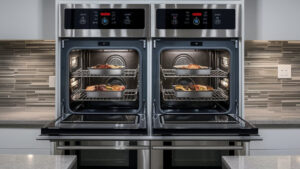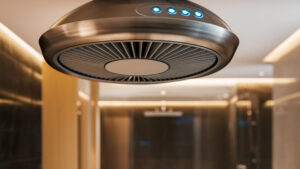Imagine walking into a room and instantly setting the perfect mood with just a tap on your smartphone. Smart bulbs have transformed the way you light up your home, offering convenience and style with a touch of modern flair.
But beyond the novelty and ease, you might be wondering, “Are smart bulbs energy-efficient enough to save on electricity bills? ” This is a question many homeowners are asking as they seek ways to cut down on energy costs without sacrificing comfort.
As you explore this article, you’ll discover whether investing in smart bulbs is a savvy financial decision or just another tech trend. You’ll uncover insights that could potentially reshape how you view everyday lighting solutions. Plus, if saving money while enhancing your living space intrigues you, then you won’t want to miss the valuable tips and facts we’ve gathered. So, let’s shed some light on the subject and find out if smart bulbs can truly brighten up your budget!
Smart Bulbs: A Modern Lighting Solution
Smart bulbs can be a great choice for homes. They use LED technology to save energy. This means less power used for the same light. Traditional bulbs waste energy as heat. Smart bulbs do not. They give bright light and save money. They last longer than regular bulbs. This means fewer bulb changes. You can control smart bulbs with your phone. Turn them on or off from anywhere. Adjust the brightness easily. Some smart bulbs change color. Set the mood with colors.
Smart bulbs are a bit costly. But they save money over time. Energy savings can reduce electricity bills. Many people find them helpful. They are a smart choice for modern homes.
How Smart Bulbs Work
Smart bulbs use LED technology. This makes them energy-efficient. They consume less power than regular bulbs. They also last longer. This means fewer replacements.
Smart bulbs connect to Wi-Fi networks. You can control them with a phone app. This allows easy adjustments. Change brightness or color with a tap. Some bulbs work with voice assistants. Just say a command and the bulb responds.
Energy Efficiency Of Smart Bulbs
Smart bulbs use less energy than traditional bulbs. They last longer and save money. Traditional bulbs waste energy as heat. Smart bulbs are cooler and more efficient. This makes them a better choice for energy savings.
Smart bulbs can adjust brightness. They use only the energy needed. This feature helps in reducing electricity usage. Traditional bulbs can’t do this. They use the same energy all the time.
The type of bulb affects energy use. LED smart bulbs are the best. They use the least energy. The time bulbs stay on also matters. Shorter use saves energy. Smart bulbs can be controlled remotely. This helps in turning them off easily.
Brightness levels impact energy. Lower brightness uses less power. Smart bulbs let you change brightness. Traditional bulbs don’t offer this option.
Cost Savings Potential
Smart bulbs cost more than regular bulbs. This is the initial investment. But they use less energy. This means they save money over time. They last longer too. So, you buy fewer bulbs. This adds to the savings.
Smart bulbs use less power. They can dim and turn off by themselves. This helps cut down electricity bills. The savings might seem small each month. But they add up over a year. It’s like saving pennies. Over time, the pennies become dollars.
Environmental Benefits
Smart bulbs use less energy than old bulbs. They help in saving electricity. This means less coal or gas is burned for power. Burning less coal helps the planet. It makes the air cleaner. Each smart bulb can reduce pollution a little. Imagine if many people use them. It can make a big difference. That’s why smart bulbs are important. They help reduce the carbon footprint. This is good for Earth.
Smart bulbs last longer than old bulbs. They need to be changed less often. This reduces waste. Less waste means less trash in landfills. Smart bulbs can be controlled easily. You can turn them off from your phone. This saves energy. Saving energy is a part of living sustainably. It helps the planet stay healthy. People can live green with smart bulbs.
Smart Features Enhancing Efficiency
Smart bulbs reduce electricity usage with advanced features like dimming and scheduling. They adjust brightness to save energy. Users can lower their bills by using these bulbs wisely in their homes.
Scheduling And Automation
Smart bulbs can help save energy. They offer scheduling features. You set times for lights to turn on or off. This reduces wasted electricity. These bulbs can also automate actions. They dim or brighten based on your needs. This means you save more energy.
Integration With Smart Home Systems
Smart bulbs work with home systems. Connect them to smart assistants like Alexa. This allows easy control using your voice. You can group bulbs together. Control them all at once. This makes managing lights simple. It helps you use electricity wisely.
Challenges And Limitations
Smart bulbs can have some drawbacks. They might not always be energy-efficient. Some models use more power than regular bulbs. This can surprise users who expect savings. Smart bulbs need constant Wi-Fi. Without it, they may not work properly.
Technical issues can happen. Sometimes bulbs do not connect easily. They might lose connection often. This can be frustrating. Users might need to reset them. Security is another concern. Smart bulbs connect to home networks. Hackers might try to access them. So, users need strong passwords.
Smart bulbs might not fit all lamp types. Some lamps need specific shapes or sizes. Compatibility can be an issue. Users should check before buying. Not all smart bulbs fit every lamp.
Future Of Smart Lighting
Smart bulbs offer energy-efficient lighting solutions. They use less electricity compared to traditional bulbs. This efficiency can lower electricity bills over time. Smart lighting adapts to usage patterns, further optimizing energy consumption.
Trends In Smart Lighting Technology
Smart lighting is growing fast. New trends make it even better. Voice control is now common. People can talk to their lights. Color-changing bulbs are also popular. They set the mood for any room. Energy-saving features help reduce costs. Automated schedules turn lights on and off. This saves power. Connectivity with smart home systems is improving. Lights can sync with other devices. Motion sensors are another trend. They detect movement and switch on. This is helpful in dark areas.
Innovations On The Horizon
Innovations are coming soon. Wireless charging for bulbs is in progress. This will make them more convenient. Solar-powered smart bulbs may become popular. They use the sun to save energy. Advanced sensors could track room activity. They adjust light based on need. AI integration might make lights smarter. They will learn user habits. Bluetooth mesh networks are another idea. They improve connectivity among devices. These innovations aim to make homes smarter and more efficient.
Frequently Asked Questions
Do Smart Light Bulbs Save Electricity?
Smart light bulbs save electricity by using energy-efficient LED technology. They offer features like dimming and scheduling. These features reduce energy consumption, leading to lower electricity bills. Smart bulbs can be controlled remotely, allowing users to turn off lights when not in use, further enhancing energy savings.
What Are The Disadvantages Of Smart Bulbs?
Smart bulbs can be expensive initially and may require compatible devices for operation. They depend on a stable internet connection and can pose security risks if hacked. Compatibility issues might arise with older fixtures, and frequent updates can be needed.
Energy savings may be offset by higher upfront costs.
Do Smart Bulbs Cost More To Run?
Smart bulbs generally cost less to run due to energy efficiency. They consume less power than traditional bulbs. Despite higher upfront costs, smart bulbs save money over time by reducing electricity bills. Their long lifespan further contributes to cost-effectiveness, making them a smart investment for energy-conscious users.
How Much Do You Really Save With Energy-efficient Lightbulbs?
Energy-efficient bulbs can save you up to 75% on electricity costs compared to traditional bulbs. These bulbs last longer, reducing replacement costs. While initial purchase prices are higher, long-term savings outweigh the upfront cost. Switching to energy-efficient lighting significantly decreases your overall energy bill.
Conclusion
Smart bulbs can help reduce electricity bills. They consume less energy than traditional bulbs. Their efficiency depends on usage patterns and bulb settings. Many smart bulbs offer dimming features. This further saves energy. Choosing smart bulbs may lead to lower costs over time.
Compatibility with your home’s system is vital. Installation and initial costs should be considered. Smart technology offers more control over lighting. A good choice for energy-conscious consumers. Explore options to find the best fit. Save money and enjoy efficient lighting.






